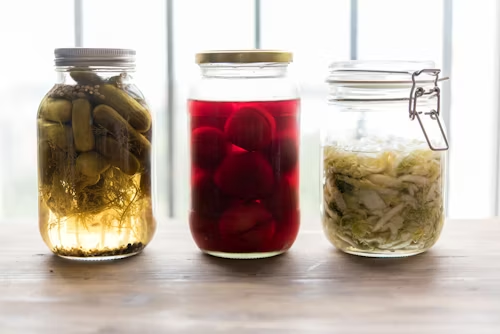
Submerged fermentation, as opposed to surface or solid-state fermentation, grows microorganisms in a liquid nutritional media. This approach makes it possible for industries to get their produce in large quantities efficiently, consistently, and widely.
In this article, we examine 12 fascinating uses of submerged fermentation.
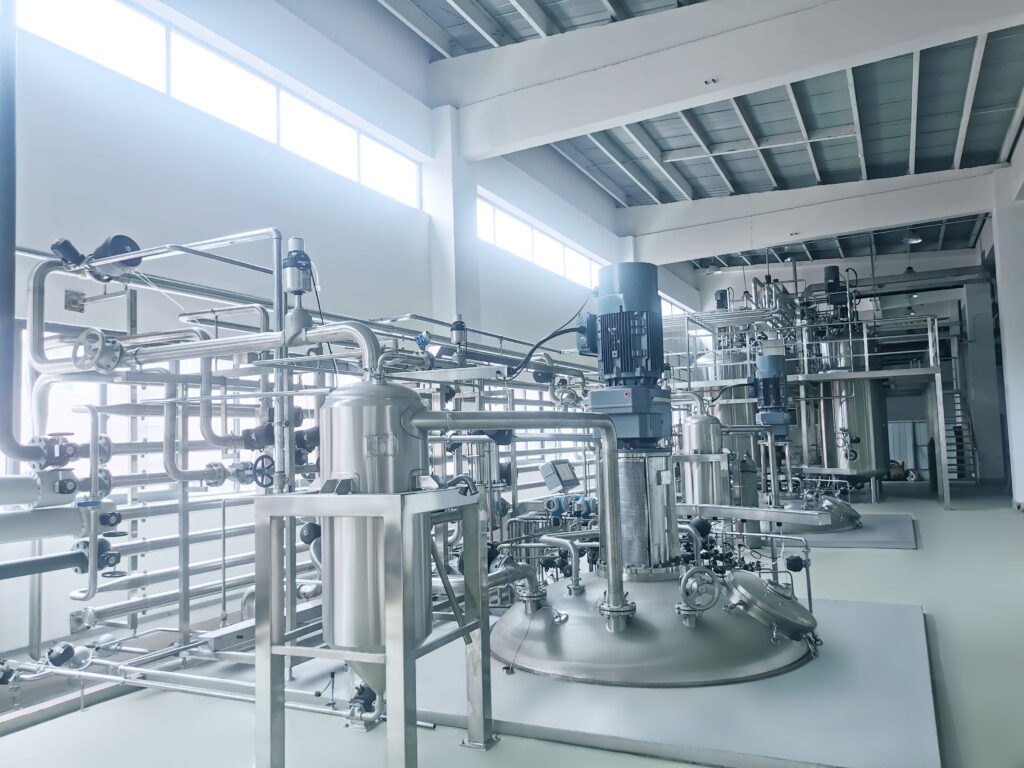
Understanding Submerged Fermentation
Unlike traditional solid-state fermentation, which relies on low moisture levels, liquid fermentation occurs in liquid-filled tanks or bioreactors.
The environment within these tanks is meticulously controlled to optimize the development and activity of microorganisms. The result is a scalable, efficient production technique that can meet global industry demands.
During the fermentation, microbes including yeast, fungi, and bacteria create a range of chemicals as byproducts by consuming sugars and other resources. Numerous products we use daily, such as citric acid, antibiotics, and ethanol are made from these byproducts.
The 12 Uses of Submerged Fermentation
Despite the fact that there is not much awareness of ‘submerged fermentation’ today, it plays a huge part in day-to-day life. Fermenting microorganisms in tanks filled with fluids has developed into a critical process for producing products ranging from drugs to food supplements.
Liquid fermentation has revolutionized manufacturing through the production of enzymes that are used in detergents and medications and the production of citric acid, which enhances the taste of our beverages. Here are more applications.
1. Manufactured citric acid
Of all submerged fermentation uses, citric acid production may be one of the most widely recognized. Initially, citric acid was extracted from citrus fruits. But submerged fermentation is now used for the production of more than 99 percent of citric acid. The method utilizes Aspergillus niger, a fungus with sterling efficiency in transforming a multitude of sugars into citric acid in massive stirred tanks.
Citric acid finds application in sodas, candies as well as cleaning products. Its primary function is to act as a preservative and a stabilizer, besides being the flavoring agent.
The food and beverage industry heavily depends on liquid fermentation as the use of citric acid keeps increasing globally.
2. Enzymes for industrial use
Since they accelerate biological reactions, enzymes are essential in various sectors, including food processing, medicines, textiles, and detergents. Enzymes like cellulase, amylase, and protease may now be produced in large quantities because of the fermentation.
Proteases, for example, degrade the proteins in laundry detergents while amylases enhance the quality of baked dough.
Industries can create enzymes on a large scale by growing particular strains of microbes in stirred tanks that are rich in nutrients. This strategy guarantees a steady supply of enzymes, assisting businesses in developing products that satisfy a range of consumer demands, including better stain removal or softer baked goods.
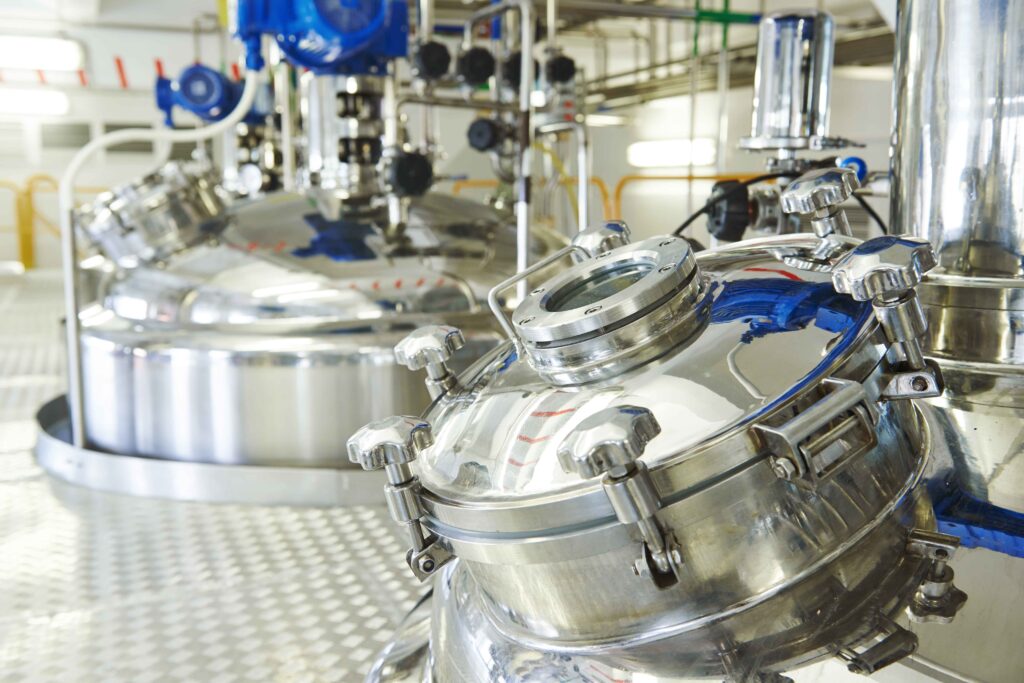
3. Mass-producing antibiotics to fight infections
Submerged fermentation is a key component of the pharmaceutical industry, especially for synthesizing antibacterials.
One of the most common antibiotics (penicillin) is made from the mold Penicillium chrysogenum. This mold is cultivated in submerged conditions. To avoid contamination and guarantee the purity and potency of the final antibiotics, the fermentation process must be carried out under sterile conditions.
Because of the ability to precisely control temperature, pH, and oxygen levels in stirred tanks, liquid fermentation has become the industry standard for creating high-quality antibiotics. Antibiotics that satisfy the needs of healthcare systems worldwide.
4. Amino acids for health and nutrition
Amino acids are vital for both human and animal health. They are utilized in medications, animal feed, and supplements.
Microbial fermentation can efficiently produce amino acids such as glutamic acid and lysine through submerged fermentation. Amino acids are produced as byproducts of growing bacteria or fungi in nutrient-rich tanks.
The demand for amino acids is expected to reach over $50 billion by 2030, and submerged fermentation provides these compounds sustainably and cost-effectively. This production technique is crucial for industries centered on nutrition and health.
5. Ethanol production
Biofuels like ethanol are becoming increasingly well-liked as sustainable fuel sources. Saccharomyces cerevisiae and other yeasts convert sugars into carbon dioxide and ethanol during submerged fermentation. This method is particularly useful for creating bioethanol, a more environmentally friendly substitute for fossil fuels.
Liquid fermentation provides a scalable way to effectively produce ethanol. It reduces carbon emissions and fosters a greener future as the global biofuel market is predicted to grow quickly.
6. Vitamin production for supplements and fortified foods
Vitamin production requires submerged fermentation, especially for B vitamins like B2 (riboflavin) and B12. These vitamins are common in dietary supplements and fortified foods because they are essential for metabolism, energy production, and general health. Cultivating bacteria and yeasts in liquid fermentation produces large amounts of these vitamins.
Submerged fermentation satisfies the exact standards of the food and pharmaceutical industries by offering high purity and constant quality. As a result, liquid fermentation has emerged as a dependable and effective vitamin source in the wellness industry.
7. Organic acids production
Submerged fermentation produces other organic acids besides citric acid. This process also produces acetic, lactic, and gluconic acids. These acids find numerous uses in biodegradable plastics, medications, and food preservation.
For example, gluconic acid is used in calcium supplements. Lactic acid is widely used in the food industry for preservation. As a more environmentally friendly option to conventional chemical synthesis, liquid fermentation enables these acids’ large-scale production.
8. Flavoring agents for the food industry
The development of natural flavor compounds is another vital function of submerged fermentation. For instance, esters give foods and beverages floral or fruity undertones. Industries can produce these flavors sustainably and under control without artificial additives by employing particular fermentation microorganisms.
These natural flavoring agents help the global flavor and fragrance market meet consumer demand for cleaner, naturally flavored products. These desired flavors can be produced consistently and scalably through submerged fermentation.
9. Biopesticides for eco-friendly farming
Biopesticides have become a safer substitute for chemical pesticides as farmers transition to sustainable farming methods. Biopesticides made from bacteria, fungi, or other microorganisms that naturally fight pests are produced through submerged fermentation. Eco-friendly agriculture is supported by these biopesticides, which are efficient but less harmful to the environment.
These microbial pesticides can be scaled up to meet agricultural demands through submerged fermentation. It supports sustainable farming practices and lessens the environmental impact of conventional chemical pesticides.
10. Animal feed supplements for healthier livestock
Health is a vital concern in animal farming. To sustain animal health, submerged fermentation offers nutrient-enriched animal feed supplements. These supplements include probiotics and are rich in essential amino acids that aid in the growth of the livestock, boosting their immune system and supporting digestion.
These fermented feed additives help to reduce the usage of antibiotics or eradicate them entirely making it a better practice for producing nutritious food for animals. The fact that the conditions of the liquid fermentation are regulated ensures the stability in quality, safety and effectiveness of these supplements.
11. Manufacture of bioplastic for packaging materials
Compared to traditional plastics drawn from petroleum which pollute the environment, bioplastics provide a rich possibility for a substitute.
Through liquid fermentation, bacteria that synthesize materials such as PHAs are nurtured in order to produce bioplastics. These biopolymers can be processed into various forms like medical products and packaging material.
Submerged fermentation is crucial to sustainably grow production because the consumption of bioplastics is increasing at a rate of over 20 percent per annum. This process fulfills the consumer desire for attractive, environmentally friendly products. It, as well, promotes the ongoing shift toward sustainable packaging.
12. Waste treatment and biogas production
Submerged fermentation is useful in making ethanol from agricultural waste and in the production of biogas.
Methane is also captured from the fermentation of organic waste using bacteria at waste treatment amenities. This gas helps in fuel or electricity production, contributing to a sustainable economy.
Liquid fermentation is effective in waste management and energy production because it metabolizes waste into products that conserve energy and reduce greenhouse emissions.
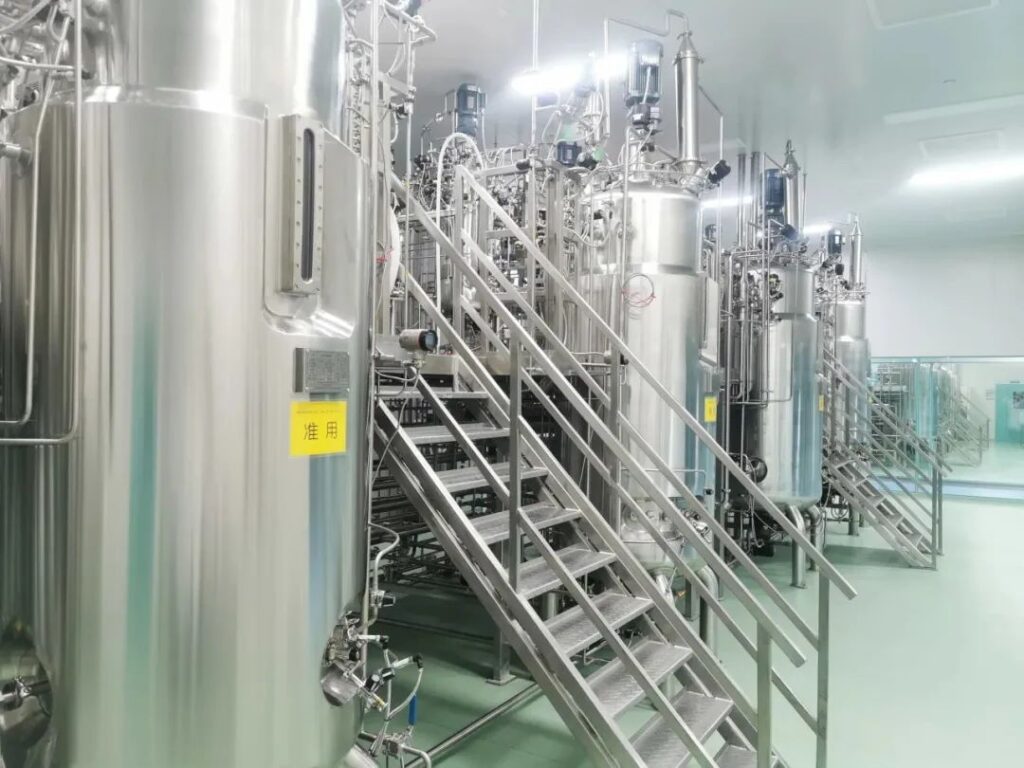
Why Choose Submerged Fermentation Over Other Types
Compared to other types of fermentation and their applications, submerged fermentation is superior because of its efficiency, expandability and regulatability. While techniques such as surface or solid-state fermentation exist, submerged fermentation is growing in popularity across industries for the following reasons:
1. Enhanced productivity
By employing submerged fermentation for the development of high density cell mass, many industries have realized greater yields.
Unlike in solid-state fermentation, bacteria in the liquid medium in submerged fermentation develop faster. This is because they have a regular supply of nutrients, increasing production. For instance, submerged fermentation can yield at least 50 percent more citric acid than many conventional techniques.
2. Precise environmental control
Being an underwater process, you can easily control parameters of submerged fermentation such as pH, temperature, oxygen level, and nutrient concentration. This is especially possible in a bioreactor such as a stirred tank bioreactor. This leads to consistent product quality and efficiency.
3. Scalability
Submerged fermentation is more suitable for large scale manufacturing industries. Since there is a variety of bioreactors ranging from small laboratory-scale to huge containers, businesses change sizes based on demand. This characteristic of submerged fermentation is one of the reasons for its use in the production of enzymes, antibiotics, and biofuels.
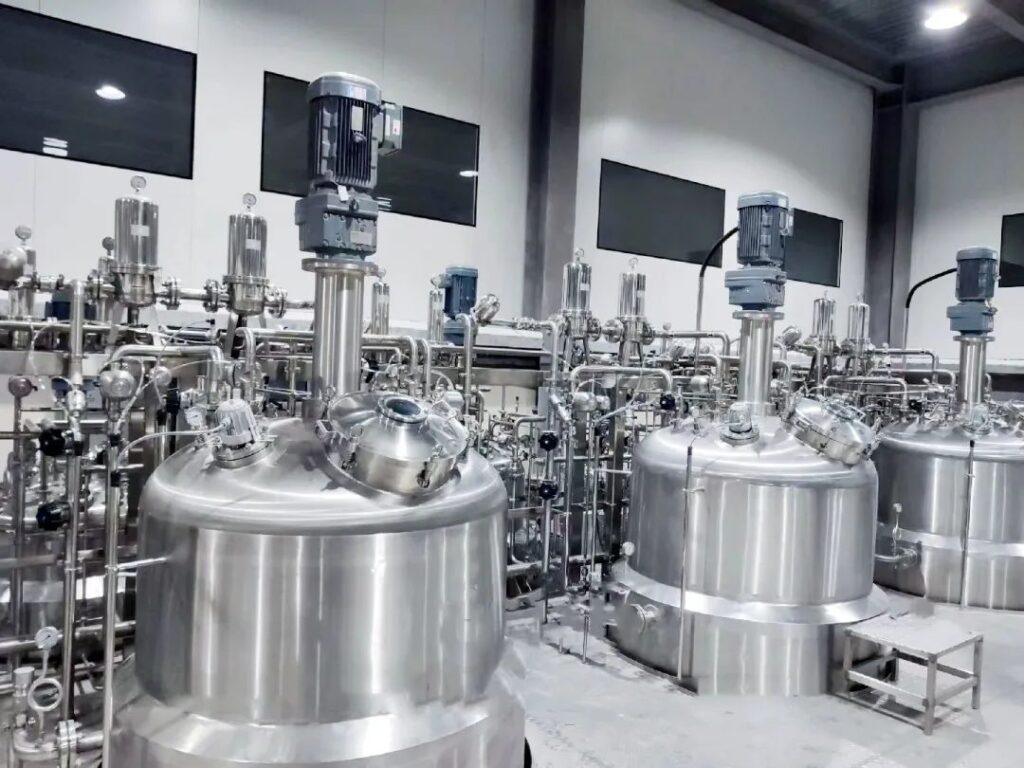
4. Reduced risk of contamination
How does submerged fermentation help to reduce the risk of infection? Stirred tanks and the airlift bioreactors or fermentors are the closed systems that help reduce exposure to contaminants. This is desirable in pharmacological applications where the degree of purity is critical. These systems offer great production results as they improve the sterilization and aseptic abilities in the production processes.
5. Versatility
Submerged fermentation fosters a variety of microorganisms, including bacteria, fungi, and yeasts. It makes it possible to develop a multitude of products like vitamins and bioplastics. Its versatility makes it applicable to various fields, such as agriculture, medicine, and environmental engineering.
6. Supports continuous production
In contrast to batch fermentation, you can employ submerged fermentation in continuous operations. This is where nutrients are added in a continuous manner, and the product is continuously harvested. This process is suitable for highly in-demand products as it increases the yield.
7. Efficient oxygen transfer
Another feature of the submerged fermentation systems is the ability to transfer oxygen. This is an important factor for aerobic fermentation. For example, in stirred tanks, it is much easier to maintain the right airflow, supporting the microbes’ growth rate and metabolic rates.
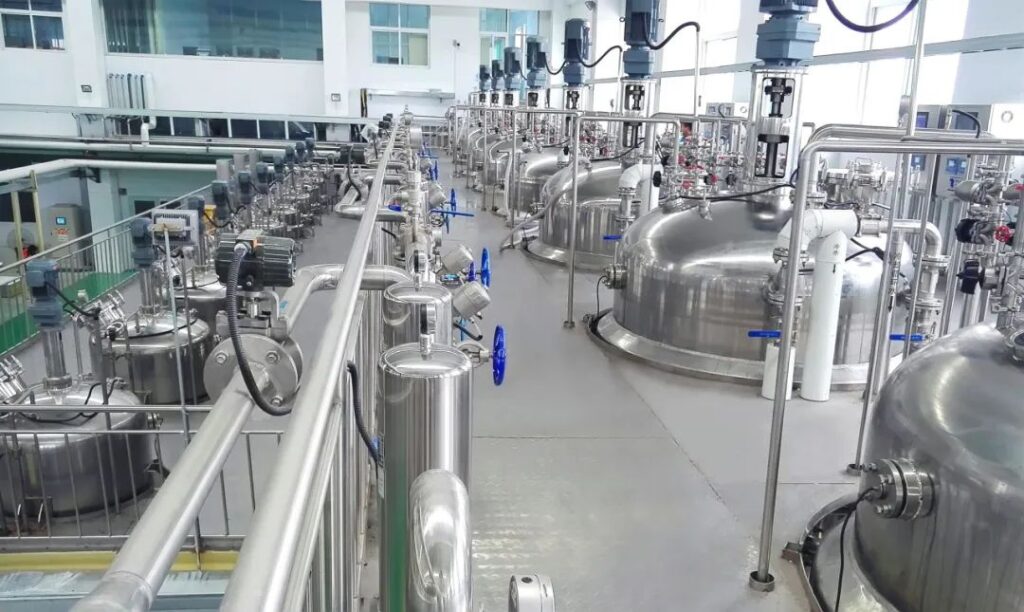
Why Submerged Fermentation is Essential for the Future
Not only submerged fermentation is a science, but it also creates innovation that is sustainable universally. It also makes it possible for business people to meet the demands of the consumer in cost-effective and environmentally sound ways. From biofuels and health and nutritional products to making biodegradable plastics and biopesticides.
Unlike applications of other types of fermentation, submerged fermentation is probably going to be essential for future industries for the following reasons:
- Scalability – Since large stirred tanks can be used for submerged fermentation, it is possible to reliably produce large amounts of a product.
- Special control – These tanks have large nitric acid capacity control factors such as oxygen, pH, and temperature and due to this, there is a high likelihood of it having high purity, free from contamination.
- Sustainability is another advantage of submerged fermentation since most bioprocesses can completely replace chemical synthesis processes.
- Flexibility – products as different as amino acids or ‘bioplastics’ are formed through similar operations due to the variety of microorganisms exploited in submerged fermentation techniques.
SSF will continue to be dominant, enabled to lead industries and achieve various sustainability goals while global demand surges.
Closing Thoughts
SSF is one of the oldest technologies that caused a change in the modern world. In fact now, civilization technology has taken a new dimension. Its uses cut across almost every industry, from production of sustainable energy to manufacture of antibiotics.
The role of organic-solvent-based submerged fermentation can only increase as more organizations discover the efficiency and suitability of this technique. So, the next time you consume a beverage containing citric acid or use a product advertised as biodegradable, do not be surprised if submerged fermentation had something to do with it.
Submerged fermentation is being used by industries worldwide to find sustainable and efficient solutions. This technology redefines production in a practical, environmentally responsible way that is aligned with the future.
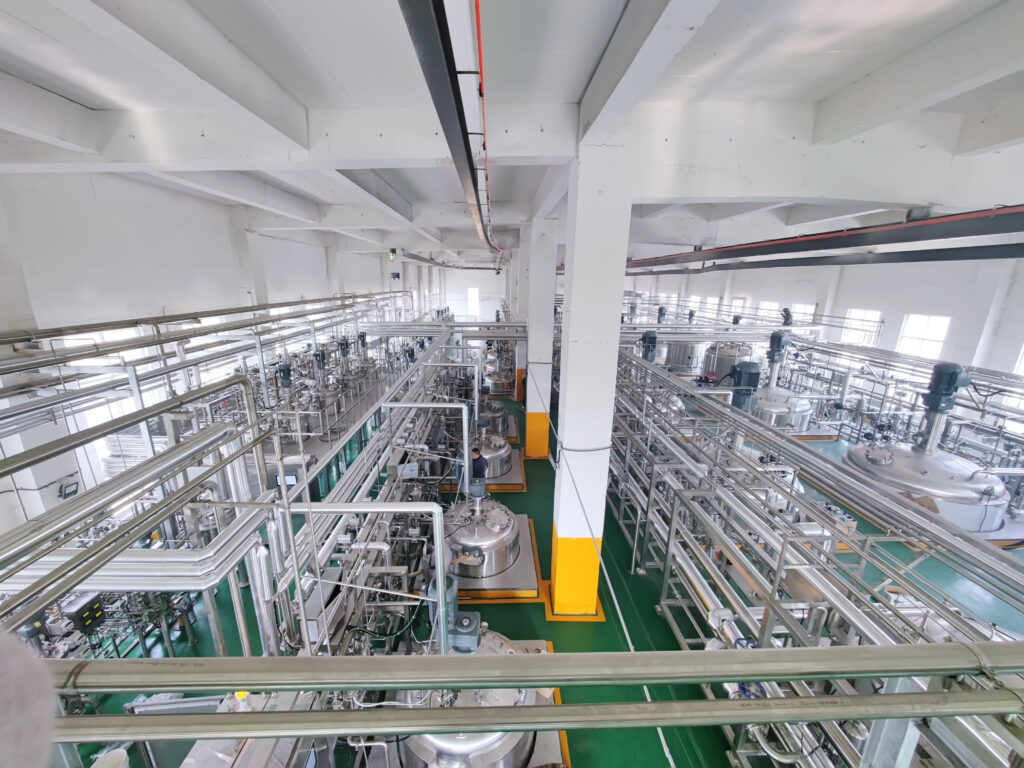
Looking for Top-tier Bioreactors? Choose Bailun Technologies!
Proper equipment is crucial if you want to use submerged fermentation to its full potential in your business. Bailun Technologies provides sophisticated, dependable bioreactors to satisfy modern enterprises’ needs.
Ranging from the manufacturing of food and pharmaceuticals to the generation of biofuel and environmental uses, our bioreactors offer unparalleled accuracy, scalability, and efficiency.
Outfit your factory or laboratory with the newest technologies available. Come see our selection of bioreactors at Bailun Technologies to discover the ideal solution for your business.

